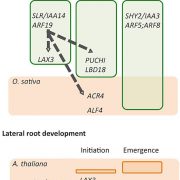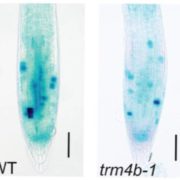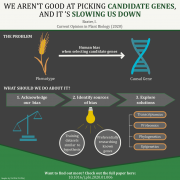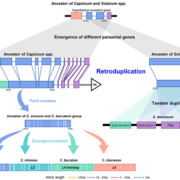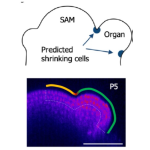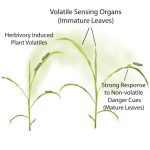Genetic architecture of heterostyly and domestication history of common buckwheat
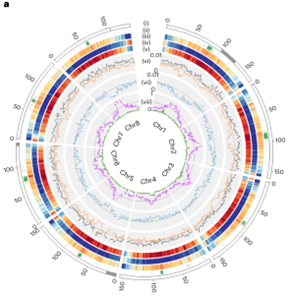 Common buckwheat (Fagopyrum esculentum) is a self-incompatible orphan crop which is gaining interest as it can be grown worldwide and grows well in low fertility soil. However, there are limited genomic resources available for common buckwheat. Here Fawcett et al. combined Illumnia short-read data with PacBio HiFi long-read data to produce a 1.27 Gb chromosome-level assembly of common buckwheat with over 30,000 annotated gene models. Surprisingly, 76% (960 Mb) of the genome was transposable elements, with the majority being Gypsy-type retrotransposons. Fluorescence in situ hybridization showed many Gypsy– retrotransposons at the centromeres, likely to have evolved after common buckwheat diverged from the closely related orphan crop tartary buckwheat (F. tataricum). The reference genome revealed many other interesting loci. The authors highlight a hemizygous gene S-ELF which is involved in heterostyly, a phenomenon where common buckwheat has two flower morphs each of which is self-incompatible, so both are required for reproduction. Knocking out S-ELF led to self-compatible flowers, suggesting a role for S-ELF in female compatibility and determining style length. The authors also used their reference genome to identify two endosperm-expressed copies of the starch synthesis gene Granule-Bound Starch Synthase (GBSS), most likely generated due to whole genome duplication during common buckwheat evolution. EMS-mutagenesis was used to knock out both GBSS paralogs and the double homozygous mutant had a waxy phenotype, which is the first example of waxy common buckwheat. These knockout gbss alleles are currently being introduced into elite common buckwheat varieties, demonstrating how the reference genome produced here can aid breeding. (Summary by Rose McNully @Rose_McN) Nature Plants 10.1038/s41477-023-01474-1
Common buckwheat (Fagopyrum esculentum) is a self-incompatible orphan crop which is gaining interest as it can be grown worldwide and grows well in low fertility soil. However, there are limited genomic resources available for common buckwheat. Here Fawcett et al. combined Illumnia short-read data with PacBio HiFi long-read data to produce a 1.27 Gb chromosome-level assembly of common buckwheat with over 30,000 annotated gene models. Surprisingly, 76% (960 Mb) of the genome was transposable elements, with the majority being Gypsy-type retrotransposons. Fluorescence in situ hybridization showed many Gypsy– retrotransposons at the centromeres, likely to have evolved after common buckwheat diverged from the closely related orphan crop tartary buckwheat (F. tataricum). The reference genome revealed many other interesting loci. The authors highlight a hemizygous gene S-ELF which is involved in heterostyly, a phenomenon where common buckwheat has two flower morphs each of which is self-incompatible, so both are required for reproduction. Knocking out S-ELF led to self-compatible flowers, suggesting a role for S-ELF in female compatibility and determining style length. The authors also used their reference genome to identify two endosperm-expressed copies of the starch synthesis gene Granule-Bound Starch Synthase (GBSS), most likely generated due to whole genome duplication during common buckwheat evolution. EMS-mutagenesis was used to knock out both GBSS paralogs and the double homozygous mutant had a waxy phenotype, which is the first example of waxy common buckwheat. These knockout gbss alleles are currently being introduced into elite common buckwheat varieties, demonstrating how the reference genome produced here can aid breeding. (Summary by Rose McNully @Rose_McN) Nature Plants 10.1038/s41477-023-01474-1


